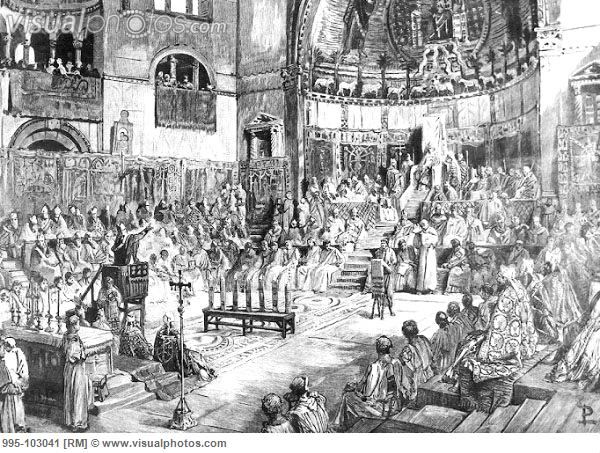The Fifth Crusade
Following the ill-fated Fourth Crusade, the Fifth Crusade (1217 - 1221) proved that the recapture of Jerusalem was still at the forefront of the Church’s mind. It believed that the best way of doing this was to break Egypt’s unity by first conquering the powerful Egyptian state of Ayyubid.
Egypt still had a firm hold on Jerusalem and the majority of the land that was previously held by the Christians when Pope Innocent III urged this new Crusade at the Fourth Lateran Council in 1215. Wary of repeating the same mistakes made in the Fourth Crusade, the pope was determined that the Fifth be controlled and overseen by the Church.
However, Pope Innocent III's pleas to begin the new crusade initially went unanswered as a result of the failure of the Second, Third and Fourth Crusades and the reluctance of Christian leaders to suffer another defeat. Not one to give up easily, the Pope instead appealed to Christian members of the public and offered them the Indulgence - a reward for joining the Fifth Crusade or offering financial help. Those who were not physically able to march to the East were encouraged to help towards the Crusade by fasting and praying for a positive outcome. Those who did have available funds were urged to help to finance another Crusader who would not be able to afford to go otherwise.

Pope Innocent died in 1216 without seeing the results of the Crusade he longed for, but his plans were continued by the new pope, Honorius III, who wrote to the monarchs of Europe urging them to lend their support.
The Crusaders travelled to Acre in 1217 and joined the ruler of the Kingdom of Jerusalem, John of Brienne and the Kingdom of Antioch’s Prince Bohemund IV in the fight against the Ayyubid state. King John was aware that attacking Jerusalem while Egypt remained strong was not feasible, so planned to take Egypt under Latin control and thereby force the Muslims to relinquish their hold on Jerusalem.
Oliver of Cologne and the count of Holland, William I, arrived with large armies to assist in the plan to conquer Egypt. They allied with the Seljuk Sultan of Rum, and worked together on a plan to attack the Egyptians from the north.
The Crusaders left Acre on 24 May 1218, bound for Egypt, and first launched an attack on Damietta, a key Egyptian settlement which guarded the main route up the Nile river to Cairo, in June of 1218. With ranks boosted as a result of the arrival of a large number of French Crusaders led by Cardinal-Legate Pelagius, the Crusaders believed that they were well on their way to taking control of Damietta, the first step in their bid to capture Cairo, which would then lead to the rest of Egypt coming under their control.
The city managed to fend off the Crusaders for several months, and, in February 1219, offered peace terms that included the cession of the kingdom of Jerusalem and the return of the True Cross. While King John and a large number of Crusaders were keen to accept the terms and return home, Cardinal-Legate Pelagius, who argued that the Crusaders were under the Church’s control, refused, and the fighting continued, with thousands of men losing their lives.
Damietta was taken on 5 November 1219, and, once inside the settlement, the Crusaders looted it for a number of days, as their enthusiasm built for their next attack on Cairo, the final obstacle placed in their path by Egypt. From there, they planned to head straight for their top priority – Jerusalem.
Conclusion
Damietta’s leader, the Sultan Al-Adil, planned to ward off the Crusaders’ huge army as they swarmed towards Cairo. However, once the Egyptians saw the size of the army, they fled away from Damietta towards Cairo, taking up a position next to the Nile river. The Crusaders were hindered in their progress and failed to take the flooding of the Nile into account, so, upon reaching Cairo, they were trapped behind a canal that was now flooded. The Christians retreated and marched home as the Egyptians launched their attack. The Christian army was all but wiped out and the remaining men were captured by the Sultan who demanded the immediate return of Damietta. The Crusaders had no choice but to agree to the demands and the Fifth Crusade came to an end.
The Fifth Crusade marked the last Crusade that was organised by the Church in which different nations came together to fight to recover the Holy Land.
See also: The Sixth Crusade
MLA Citation/Reference
"The Fifth Crusade". HistoryLearning.com. 2025. Web.
